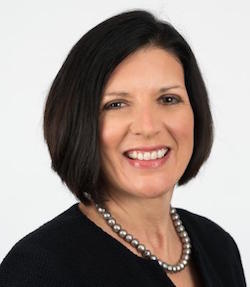
In the first quarter and beyond, Brookdale Senior Living made progress on the turnaround strategy it announced in February, “but we have a significant amount of work ahead of us,” CEO Lucinda “Cindy” Baier told shareholders and analysts Tuesday on the company’s first-quarter 2018 earnings call.
“We are only in the first inning of this turnaround,” Baier said. “We are fixing what we can control now so that we are ready to take advantage of the ‘silver wave’ of senior housing demographics.”
The “fixing” is centered on three priorities, she reiterated. “First, attract, engage, develop and retain the best associates. Second, earn resident and family trust and endorsement by providing valued, high-quality care and personalized service, which in turn will lead us to our third priority, to drive attractive, long-term returns for our shareholders,” Baier said.
To help meet the workforce goal, Brookdale now considers each executive director “the CEO of their community” and expects more decisions to be made at the local level, Baier said. “This includes driving community performance, allocating resources within given guardrails and building the community culture” and has resulted in creative ideas to improve move-ins and reduce controllable move-outs, she said.
The company also is expanding its sales training, developing a “more robust” internal succession plan for each executive director position and implementing a program to recruit people for some positions externally before vacancies occur, Baier said.
In the first quarter of 2018, retention in the top three community-level positions — executive director, sales director and health and wellness director — improved 4% year-over-year, she said, adding that Brookdale is “selectively expanding our investment in other associates.”
Resident care / operations goals
In the first quarter, communities were closed for visits and new moves-ins approximately 33% more days than in the same quarter last year. So one of the ways that Brookdale worked to meet resident care and operations goals was by visiting the homes of prospective residents to conduct initial assessments, Baier said.
Sales leads, leads-to-visits, move-ins and move-out rates all improved during the first quarter, she said.
Also, the CEO said, the company is redistributing funds to keep its contact center open seven days a week without increasing overall costs. “We expect this will improve our lead capture and speed to lease,” Baier said.
Shareholder-related goals
Also as part of its strategy related to shareholders, Brookdale executives previously announced a plan to sell approximately 30 communities that it owns, including some that are high-performing.
“We are pleased that as of April, we already have a letter of intent for approximately 20 of these assets, and we are working toward a definitive agreement,” Baier said.
Interim Chief Financial Officer Teresa Sparks said that Brookdale had disposed of 111 communities through sales or lease terminations from the beginning of 2017 through the first quarter.
In ancillary services, the pressures that affect senior housing also are affecting home healthcare, she said, adding that lower Medicare reimbursement rates also are impacting performance.
“The home health sector continues to be a challenge and is below our expectations,” Sparks said. The company is reducing its reliance on contract labor in an effort to help improve the operating margin, she added.
Hospice revenue, on the other hand, increased by 45% year-over-year, Sparks said. Brookdale expects home health to continue to be under pressure and hospice to account for much of growth in ancillary services in 2018, she added.
The future
The first-quarter 2018 same-community senior housing portfolio weighted average occupancy was 84.8%, a decline of 130 basis points compared with the first quarter of 2017 and sequentially lower by 90 basis points from the fourth quarter of 2017, Sparks said.
The company expects occupancy to be lower in 2018 than in 2017, Baier said, due to continued industry pressures, a tight labor market and lease escalators.
“We expect to build in 2019 and then by 2020, we are going to capture the full benefits of having a more normalized operating environment and having our full operational turnaround plan executed,” she said.



